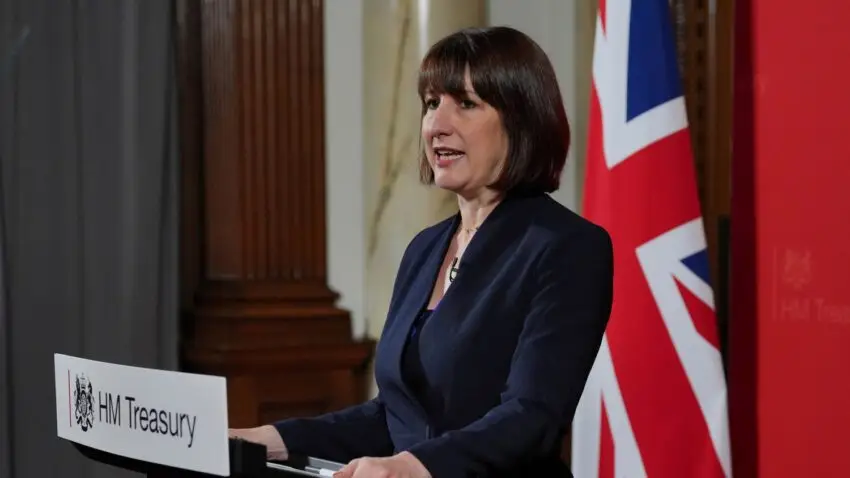S&P Global has issued a stark warning regarding the UK’s fiscal health. High debt levels are a major concern for the country’s economic future. The new Labour government faces a challenging landscape, hampered by fiscal constraints. Meanwhile, the nation’s debt is projected to reach 100% of GDP by next year, implying limited room for policy manoeuvres.
S&P’s Warning on UK’s Fiscal Outlook
S&P Global has highlighted the UK’s high debt levels as a significant weakness for its sovereign debt status. The incoming Labour government will face substantial challenges due to the limited fiscal environment. The debt is expected to peak at 100% of GDP next year and then slowly decline.
This high level of debt will restrict the government’s ability to implement new policies, especially those that require increased borrowing. The market’s negative reaction to the former Prime Minister’s fiscal policies has heightened caution. The general government deficit was at 6% of GDP in 2023, with gross debt slightly above 100% of GDP, the highest level in a decade.
Debt and Credit Ratings
S&P had previously raised concerns about the UK’s fiscal position, leading to a downgrade of the UK’s AAA rating after the Brexit vote in 2016. Currently, only a few countries, like Germany and Canada, maintain this top rating. The UK’s fiscal constraints continue to limit the possibility of an upgrade under the new government.
Despite Labour’s commitment to reduce debt over five years, S&P remains doubtful. The agency points to the already high tax burden and pressures to increase public spending as barriers.
The tax burden is at a postwar high, and key services are under strain. Moreover, funding needs for defence and the rising costs of an ageing population compound the issue. S&P projects the budget deficit to narrow from 4.5% of GDP this year to 3.2% by 2027.
Policy Challenges Ahead
Labour faces a tough road ahead. Balancing economic growth, improving public services, and repairing fiscal damage will require difficult decisions. S&P notes that without faster economic growth, stabilising public debt will remain a challenge.
Chancellor Rachel Reeves has already outlined ambitious plans, including building 1.5 million homes by the end of the parliament. Additionally, she plans to reverse the ban on onshore wind, among other initiatives.
However, the constrained fiscal environment means Reeves’ plans will need careful navigation. The upcoming autumn budget will provide further insights into how Labour intends to manage these challenges.
Market Reactions and Projections
Despite the electoral outlook, government bond yields have stayed stable. Over the past week, 10-year debt yields traded between 4.1% and 4.2%.
The market’s stability suggests that investors are cautiously optimistic. Yet, this doesn’t remove the pressures on the new government to deliver results.
S&P’s latest assessment indicates that absent a significant boost in economic growth, managing public debt levels will be difficult. This points to a need for strategic policy-making under Labour.
Historical Context
The UK’s fiscal challenges are not new. Past administrations have grappled with high debt levels and budget deficits. However, current circumstances are uniquely severe, given the global economic situation and domestic pressures.
Since the Brexit vote in 2016, the UK’s economic landscape has changed dramatically. The initial downgrade of the UK’s credit rating by S&P was a significant marker of this shift.
Fiscally, the country has moved from one challenge to another, highlighting the intricate balance between spending and revenue.
Future Outlook
Looking ahead, the new government’s ability to manage the fiscal landscape will be crucial. With high debt and limited fiscal room, policy decisions must be precise and strategic.
Chancellor Reeves’ upcoming budget will be a critical indicator. The Labour government’s fiscal rule, aimed at reducing the debt pile over five years, will be under scrutiny.
Overall, while there is hope for economic improvement, the constraints and challenges highlighted by S&P underscore the need for cautious and well-planned fiscal policies.
Key Takeaways
The UK’s high debt levels present a significant challenge. The new government must navigate a constrained fiscal environment with strategic policies.
In conclusion, the UK faces a significant fiscal challenge under its new Labour government. High debt levels and limited fiscal room require strategic and cautious policy decisions. As S&P indicates, stabilising public debt without strong economic growth will be a formidable task. Moving forward, all eyes will be on Chancellor Reeves’ budget to gauge the Labour government’s approach to overcoming these obstacles.


